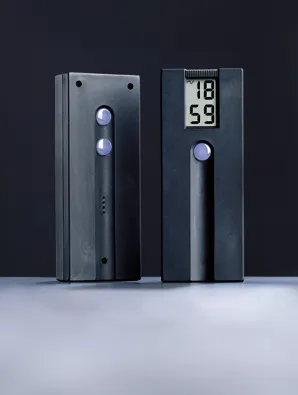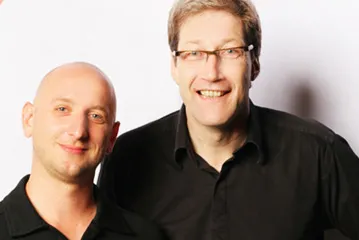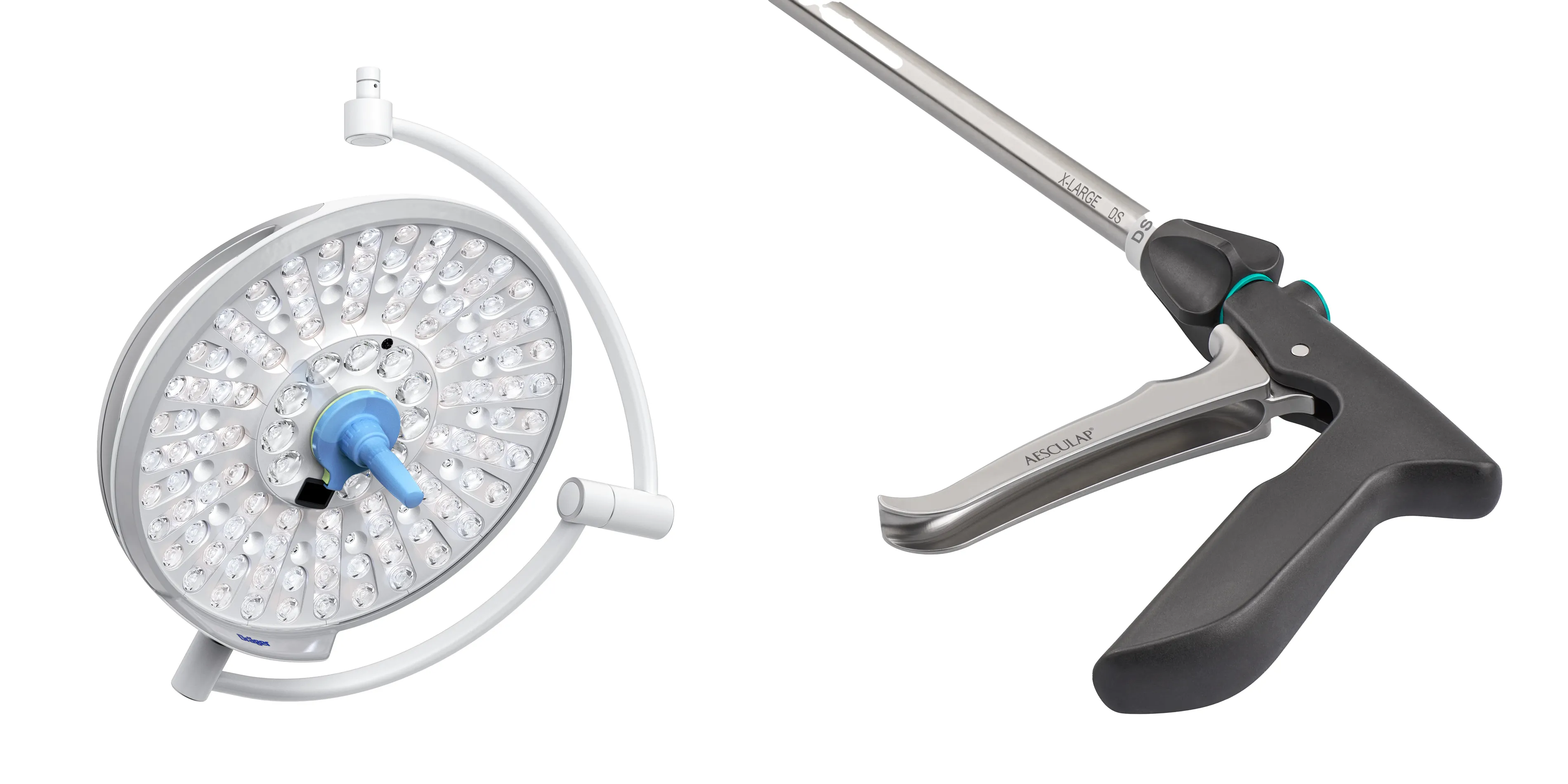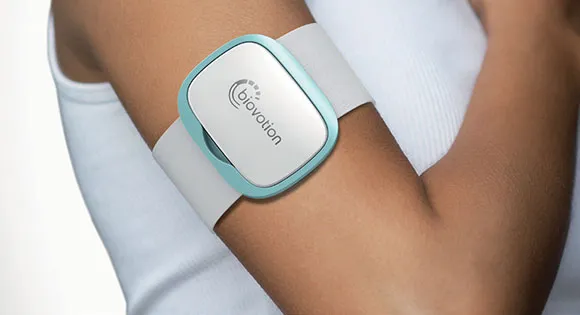Perspective
From Shangkirchen to Gelsenhai - long live the contrast and misunderstanding!
At the conference Cross Culture Branding, Design and Brand Communication for International Markets, organized by the Design Center Stuttgart in June 2011, Markus Wild told his "Chinese story" in a very personal contribution. It is just as relevant today as it was back then, which is why it is being published here for the first time online.

Off to Hong Kong with the first customer!
It actually all started 20 years ago in Hong Kong. The fascination for Asia, for China, for the Chinese, for the Other. As a newly qualified designer, I was able to accompany my first customer on a trip to the other side of the globe. I had just successfully dissuaded this very customer, a small plastic injection molding company for technical parts, from the plan to replicate a Philips flashlight as their first own product and instead develop a "never-before-seen product": a stopwatch for managers! Back then, in the early 90s, time planning systems were all the rage and, despite my lack of knowledge of the market, I suspected that a countdown timer - practically an egg timer - would be just the thing for design-loving time optimizers.
So, countdown timer designed, called "Time Tool"; customer delighted, expensive tool built, sample parts moulded - an extra complicated material called "Heavy Valox" used, a mineral-filled thermoplastic that feels cool and mineral, but tends to streak - the "master badge" (color admixture to the transparent base material) for the translucent color of the buttons trimmed exactly to "opal"... . Where do we get the electronics from now? At the time, it was not possible to do this in Germany for a reasonable budget. So the idea was born to get the electronics from the Far East. The customer doesn't speak English, so I'm on board as interpreter (and designer).
I hopped on a plane at short notice and jetted off to Hong Kong. Hong Kong at 32 degrees at the end of November, very impressive. After an hour in the jungle, we arrived at a GDR-like border in Shenzhen, with a similar border crossing procedure. Then we were standing on a sandy road surrounded by the bustling life of cookshops, cockroaches and cats. We climbed into a rickety cab, which we were allowed to have all day for the equivalent of DM 10, we sped around dozens of bicycles loaded 5 meters high with plastic bottles and bales of straw and after two minutes we came to an eight-lane highway, past brand new bank skyscrapers. It was really impressive! You wouldn't believe it today, but one week was enough for us to find the one watch manufacturer out of the thousands in Hong Kong who was interested in our mini-quantity of 10,000 pieces and didn't want to rip us off. A customer-specific LCD (Liquid Crystal Display) and PCB (Printed Circuit Board) were added (not affordable in Germany at the time) and eight weeks later the shipment was on its way. "That's possible," we thought.

It still has to be assembled.
Okay, there are also home workers in Germany. And then they were finally ready, after only 6 months of development, "24/7" - "around the clock": 10 pallets of super-awesome, top-packaged "Time Tools", ready to delight the exclusive target group. The next problem loomed: Good design doesn't sell itself! You have to experience this at some point. For me, it came in my first job. After two more months and around 20 tools that I had painstakingly sold to my friends, I came up with the glorious idea of sending my customer an invoice for the promised commission on the planned sales volume; - that didn't go down well. After all, the tool had won an -> IF design award (International Forum Design) in the meantime, which should actually be a license to print money... or should it?
So something had to happen very urgently, otherwise my customer would be broke and I would be broke. So, out of necessity, I tried my hand at selling. And here again the proof: as a designer you have to be a generalist - I managed to sell a good 6,000 pieces within a few weeks. 1,500 to the iF as a give-away, the rest in large batches to advertising buyers. Project saved, memories saved on the credit side. This story simply had to be told.
Does the story have anything at all to do with our topic? With cross-culture branding or cross-culture design? For me, it stands for cross culture. Without the other culture, the project would have failed immediately after the design development and my career would have started with a negative experience. The unfamiliarity, coupled with the adventurous spirit of letting oneself IN to the new influences, even letting oneself OUT to the foreign people, made the project a success. And the success revealed the character of Cross Culture: it is short-term, extremely dynamic and virtually the opposite of good German down-to-earthness (of which I have a good portion in my genes).
Cross culture - opposites attract
How can I best convey what the crossing of cultures means and produces? The phenomenon should not only be approached academically, but with skin and hair or with body and soul. You have to experience it for yourself. Cross culture derives its value from the fascination of otherness, from the polarity of living environments. Speaking of polarities: 15 years later, the cross culture virus strikes for the second time. After 15 years of good German design with a respectable number of design awards, moderate growth and a good reputation in the German design community. I also owe the second and really wild China experience to a contrast - my partner at WILDDESIGN, Gerhard Seizer.

Plans for China were already well advanced in 2005 (that would be a longer story), but the man who could manage to effectively proclaim the spirit of WILDDESIGN in a foreign country was missing. Gerhard met me at the Gelsenkirchen train station. An ankle-length Matrix leather coat, black clothes from an unknown fashion label (he had them tailored himself in Shanghai), pointed black crocodile shoes. I knew from the very first moment that HE was going to make it. So much for otherness and confidence. As a joke, we created the label "crazy & wild", although we can still argue about who is who now.
For me, cross culture branding is the age-old story of "opposites attract". There is an emotional appeal to it that goes far beyond what professionals in design and marketing can channel professionally in terms of emotions. Let's take the people, the Chinese. They are small, very small. But friendly, warm. It's amazing that you can have so much fun and genuine friendship in business in such an environment, where you think everyone wants to rip you off. That too is cross culture: having fun together and with each other. Inspiration comes for free. In China, people think anything is possible.
Let's take the colors. China is red and gold. Red is the color that stands for China like no other. This alone not only explains the affinity of the Chinese for the red dot, but red is actually everywhere and has a direct effect on the limbic system. This is precisely why we chose GRASS GREEN as the corporate color for our company. Illogical? Green means "cheap" in China. So what? Everyone does red and gold - that's supposed to be special? Believe it or not, the lush grass in our corporate picture was photographed by Roland, our first German intern in the China office, in the middle of Shanghai. Today he works for us in Gelsenkirchen. The -> grass is loved by our Chinese and European customers, even though nobody understands it 100% - and they don't have to.
More conflicting stories
A few stories about our customers, without being indiscreet. German premium or luxury brands are hip in China. So is -> Fissler. But anyone who thinks that the Chinese like Fissler in traditional Black Forest idyll (the much-cited stereotype of German customs in China) is mistaken, except for the "black". The already crazy "Diamond Pot", a cooking pot set with diamonds for a few hundred thousand euros, is presented in China with the support of our Shanghai team: Pure glamor, exaggerated gestures and luxury? It fits here!
Or let's take -> BeWell. The Hong Kong start-up company was spun off from a medium-sized toy manufacturer. Previous product: Transformers - techno toys. There is a lot of know-how that the visionary CEO Raymond Lo wants to use for a completely different area: life science products. He has them designed and developed here in Germany and even has them assembled so that they are "Made in Germany". He brings the housing parts from southern China to Darmstadt for assembly. The design comes from Gelsenkirchen. Sounds a bit crazy?
Long live the misunderstanding
Today, UNDERSTANDING is generally very popular and there is a lot of talk about blind understanding and being on the same wavelength. It is supposed to be the basic prerequisite for things to work out in business, in life and in love. I personally don't believe that. I have experienced dozens of wonderful misunderstandings in China, all of which ended well. Not because I was lucky, but because everyone involved did not assume that exact understanding was the highest priority. People are tolerant of misunderstandings, they take them into account, they amuse themselves and draw inspiration and personal connection from them. Error tolerance par excellence. Can there be such a thing in Germany?
Our rigid, straight, aesthetic design. It benefits from confrontation with the East. For example, as Gerhard Seizer did together with his partner Klara Sibeck during his sabbatical year. Away from the established design strongholds, the two searched for the diversity of cultures in everyday life. After his first three years as managing director of the office in Shanghai, he set off on a search, packed up his tents and became a nomad. On their almost year-long journey through China, Inner Mongolia, the former Soviet republics, Russia, Scandinavia, Turkey, Iran and India. They found design everywhere and everywhere there was a completely different understanding of what design means. His insight: our highly cultural view of design is irrelevant in most countries. But if you go to the countries and immerse yourself in the locality, then an exchange begins that couldn't be more exciting.

Curiosity on both sides
Or let's take the various employees in our two offices. We call them "team members". Chinese in the Gelsenkirchen team and Europeans in the Shanghai team - "Shangkirchen" and "Gelsenhai". That brings the best misunderstandings and first-class creativity. Very personal points of view, but we are glad that we can contribute them. Just as cultures have to converge on a global scale, this is also happening in our offices. There was a great deal of curiosity on both sides during the first live video link between the offices. One of the things we have in common is that both offices have a very similar character. The empty office in Chang Ping Lu, which we took over furnished, has now become a cozy loft that both customers and employees love. It looks exactly the same in Gelsenkirchen - a large room, the same tables and the same green chairs. Corporate identity en passant.
We had another interesting experience. As exciting as a metropolis like Shanghai may be, you still need a home, a place to retreat to. In the early days, it was noticeable that interns and newly arrived employees had major teething problems. Since we have had our WILDDESIGN shared apartment for interns (sometimes also for owners), it has become a special place and meeting point for the entire team. National cooking evenings are regularly organized here to get to know the different home countries, from the Finnish graphic designer who prepares kalakukko (traditional dish from the Finnish region of Savo: fish baked in bread) to the interior designer from Malaysia who cooks nasi lemak (rice dish that is eaten for breakfast as well as at other times of the day). The counterpart to this is currently being created in Gelsenkirchen - > the WILDDESIGN shared flat in the middle of the most Turkish part of the city, so that the cultural qualities of the Ruhr region can be transported all over the world. We look forward to further contrasts and misunderstandings in the service of high design quality and our fun at work.
If you've made it this far, it's worth reading on:
-> Brand transfer in Chinese - Interview with Gerhard Seizer
Frequently asked questions




